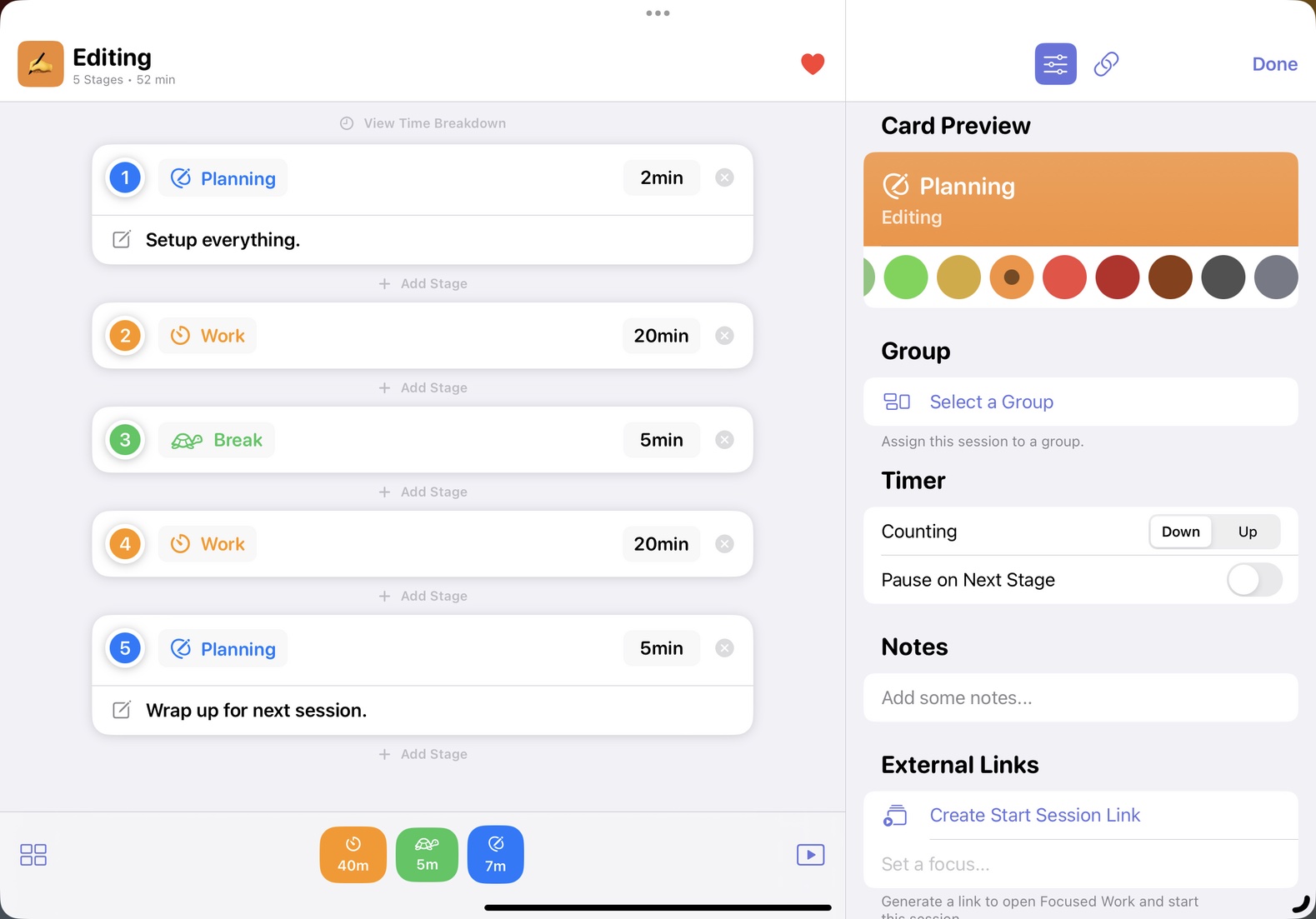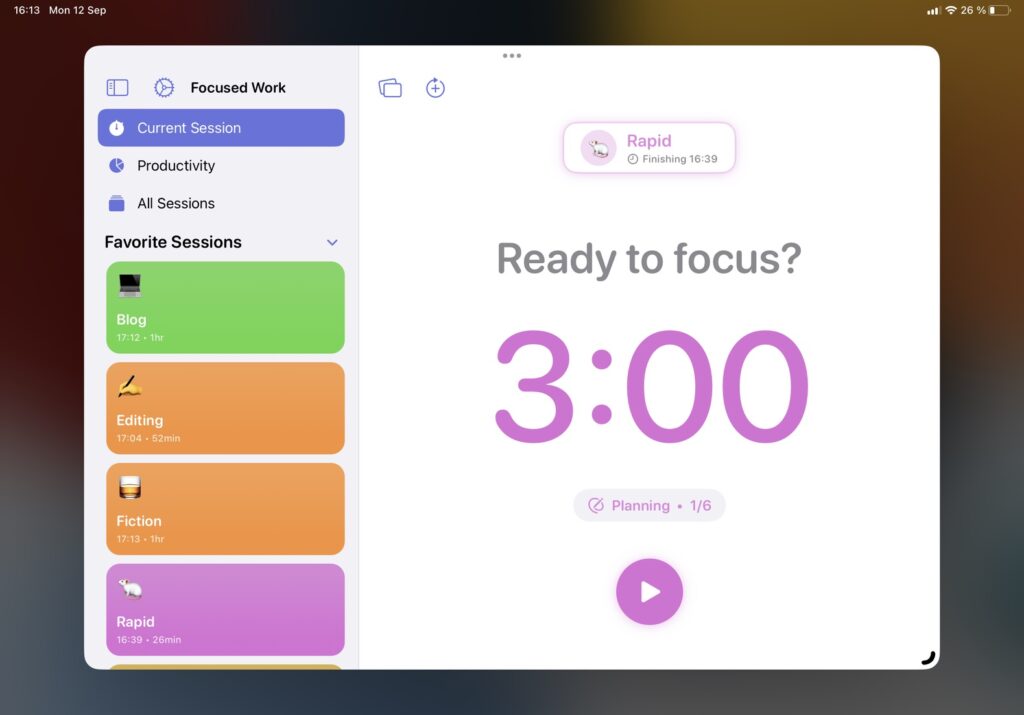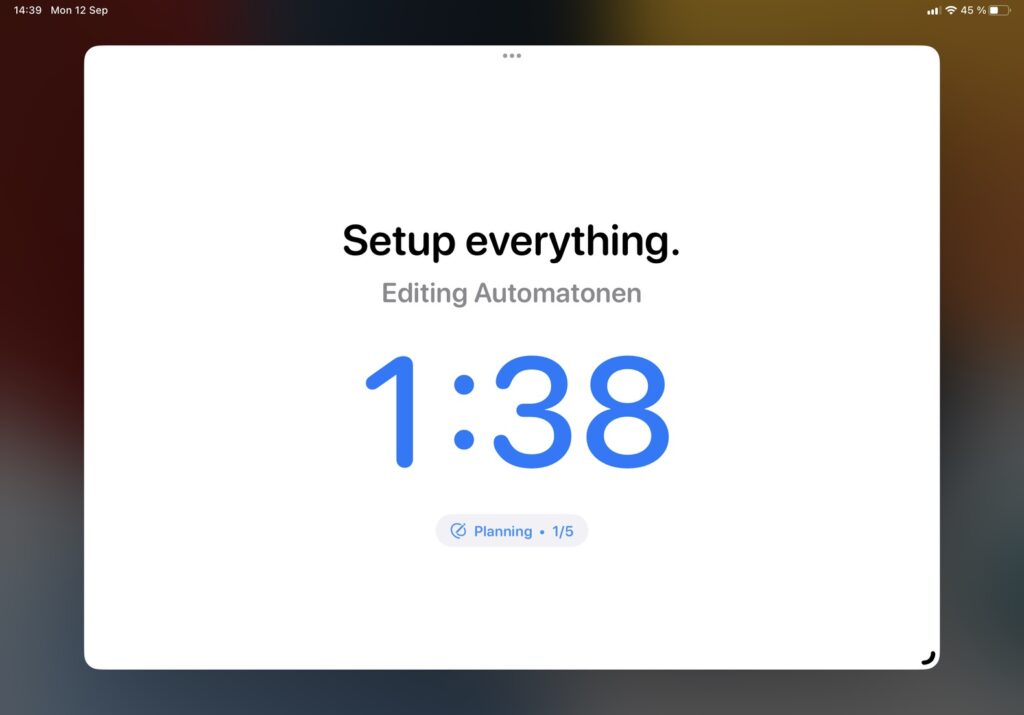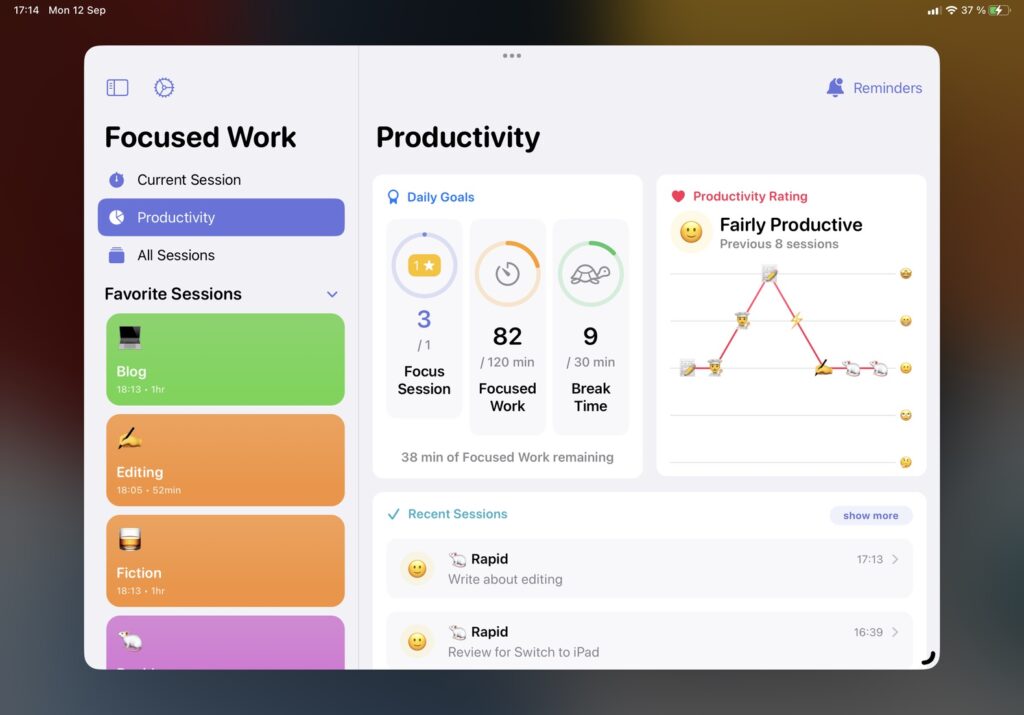I’m faced with one of the worst things there is for a writer: Editing your manuscript. While I’m delighted to see my book getting published (in Swedish, sorry to most of you, but Swedes can tag along if you like), I know that the editing phase is horrendous. This proves to be no different, and I’ve been putting it off for over a month.
That changes now, or rather, I started to change it last Friday, and I’m doing it thanks to an app called Focused Work. The fourth version, as it were.
Regular readers might recognize Focused Work. I wrote about it in issue #35, so feel free to catch up. Since then, Focused Work has seen several updates, including a revamped user-interface, app shortcuts through Siri, support for Focus mode so that you only see relevant sessions, Toggl integration and multiple productivity charts, streaks, and the like. All that’s great, but I’ll confess I use very few of these features. I am, however, a sucked for the basic premise: Start a focused work session tailored to your task.
Focused Work comes with many default sessions, most following the popular Pomodoro technique. The idea is that you get some work done, then you take a short break, after which you get some more work done. This is managed through timers, and yes, you could do all this with the timer feature in the Clock app, but it’s not as nice.
What I really like about Focused Work is that I can set up my sessions. Here’s a screenshot of the one I use to force myself to actually do some editing.

Creating your own session is easy. It consists of timed blocks, which can be actual work, rest, or planning. As you can see, my editing session is 52 minutes long. It starts with a setup phase for 2 minutes, after which I’ll edit for 20 minutes. I get a 5-minute break, before another 20-minute editing session. Finally, I wrap up with whatever notes I need to jot down in a planning session. The app will tell me when to stop, and when to work, using push notifications. In fact, I just got one that tells me to get back to work.

I really like how easy it is to create these planning sessions, and group them, if you want to got nuts with sessions for just about everything. Me, I like to keep it simple, with sessions for writing fiction, editing (as you can see), writing blog posts, and a variation of the default rapid session, to really bang out whatever it is I need to get done that isn’t big enough to be any of the other sessions.
Typically, I use this method for write-related things, but I intend to take this concept to my other tasks as well. This includes design and development, which means I’ll jump between devices. Luckily, Focused Work is a universal app, so I can trigger it anywhere, even if I’m writing by hand (like a caveman). I think having a session setup, with widgets on my home-screens, will be really beneficial to me. I’ll even put some of them on my iPhone, for those away from iPad days.

We need to talk about pricing, though. Focused Work is free to download, but you’ll want the Pro features pretty early on. That means getting a subscription, which are $5/month, $30/year, or make a lifetime purchase at $60 one-time charge. Yeah, it’s a bit steep, maybe, I don’t know. It all comes down to how you value your time, and making something with it. To me, tools like this are useless at times – they just don’t fit my mood – but at other times, they’re really valuable. Like right now, with my dreaded editing, and balancing other writing projects. I made the lifetime purchase to avoid yet another subscription.
So, there you have it, Focused Work 4. It’s an app that does a whole lot more than what I’ve talked about here, so I urge you to give it a go. If you’re into this sort of thing, I’m certain you’ll find it useful.
🧘🧘🧘🧘 of 5 – Great!
Focused Work is free to download, with both subscription options and lifetime unlocks.



